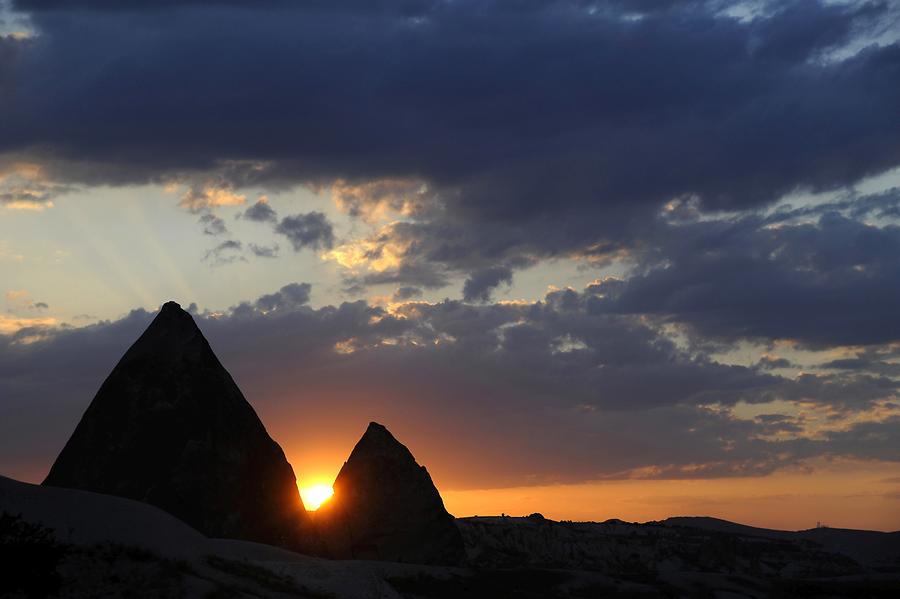Valley of roses#

Valley of roses, May 2012, © Gerhard Huber, under CC BY-NC 4.0 +Edu
The fascination for Cappadocia has two reasons: one of them has its roots a long time ago. Millions of years ago Anatolia (Cappadocia) was a lake land region and a tropical swampland. But when the Taurus Mountains in South were raised further, Cappadocia was transformed into a literal hell on earth. Enormous amounts of lava were slowly released by clefts and craters and volcanos like Mount Erciyes ejected heaps of ash into the air. Only 100,000 years ago the situation calmed down. What remained was an about 100 meters thick layer of ash covering an area of the size of Styria. Since then these Tuff sediments are eroded by wind, rain, snow and rivers to form breathtaking landscape art. The last centuries have also contributed to the “work of art Cappadocia”: Byzantine Christians dug churches and cave systems for thousands of people into the porous rock.
Die Faszination Kappadokiens hat zwei Ursachen: die eine liegt schon lange zurück. Vor Millionen von Jahren bestand Anatolien (Kappadokien)aus großen Seenplatten und tropischen Sumpflandschaften. Als sich jedoch das Taurusgebirge im Süden weiter hob, verwandelte sich Kappadokien im wahrsten Sinne des Wortes zur Hölle auf Erden. Riesige Mengen Lava wurden langsam aus Spalten und Kratern an die Erdoberfläche gedrückt und Vulkane wie der Erciyes Dagi schleuderten Unmengen an Asche in die Luft. Erst vor 100.000 Jahren beruhigte sich die Lage. Zurück blieb eine 100 m dicke Ascheschicht, die ein Gebiet von der Größe der Steiermark bedeckte. Seitdem werden diese Tuffsteinablagerungen von Wind, Regen, Schnee und Flüssen zu einem atemberaubenden Landschaftskunstwerk modelliert. Die letzten Jahrtausende trugen dann nochmals zum „Gemälde Kappadokien“ bei: Byzantinische Christen schlugen Kirchen und Höhlenkomplexe für tausende Menschen in den porösen Felsen.